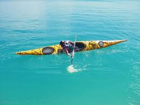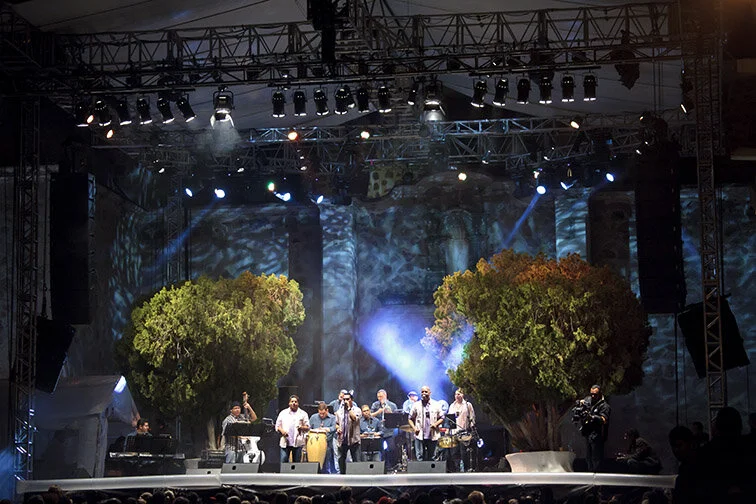words + photos by Janet Schneider
On a recent 20-mile bike ride along Torch Lake Drive in Northern Michigan, I expected to see beautiful views of what National Geographic has called “the third most beautiful lake in the world.” However, from the road, I saw very little of the lake. Most of the houses were also concealed from sight. Instead, I noticed the wooden signs sprouting at the end of driveways like mushrooms, or attached to mailboxes like antlers.
 These signs contained not only the homeowners’ but their properties’ names as well. Similar to the language found on boats, these often were terms of endearment or hopeful expressions of escape, fun and abandonment. While admiring these intricately decorated signs, I speculated about the inhabitants’ lake lives and recalled my own memories of lakeside cabin life.
These signs contained not only the homeowners’ but their properties’ names as well. Similar to the language found on boats, these often were terms of endearment or hopeful expressions of escape, fun and abandonment. While admiring these intricately decorated signs, I speculated about the inhabitants’ lake lives and recalled my own memories of lakeside cabin life.
From my bike height perspective, I was in the perfect position to focus on these owner-selected symbols of lake activity. It was clear from the choices made about their signs: shapes, materials, colors, font styles, and images, owners took tremendous pride in these homes. These signs were primarily made of wood, engraved with colorful scenes of lakes and their wildlife including birds such as loons, herons, or eagles. I cycled by painted images of natural settings with sand, plantings, the sky, and the sun. I slowed down at one memorable sign, an enlarged photograph of a golden sunset over a lake.
It is common for Southeast Michigan residents to own a cabin “Up North.” Many of these have been passed down and bring to mind happy inter-generational family memories. Families travel to these special places on weekends throughout the year and in the summer. They only differ by size, location (lake access the most treasured), and amenities such as a dock, deck, screened-in porch, or remodeled kitchen.
It was a perfect day for cycling – 70 degrees and overcast in late afternoon. There were very few cars on the road and occasional sounds. I welcomed the shade under the willow trees; their draping canopies occasionally brushing against the top of my head. Every once in a while a light wind blew the hairs of my forearms and when cars passed close I felt their heat on my bare legs. I smelled dirt, decaying leaves, lake water, freshly cut grass and pine trees.
 I loved signs that read, “High Hopes,” “ShorLivin,” “Tranquility,” and “Panacea” next to pictures of sailboats, fishing rods, and deck chairs. I have these same expectations when I travel from California every summer to my own hideaway. I laughed when I saw “At Last,” which reminded me of the 5-hour flight and hour-long drive it took me to reach my own place of serenity on a nearby lake.
I loved signs that read, “High Hopes,” “ShorLivin,” “Tranquility,” and “Panacea” next to pictures of sailboats, fishing rods, and deck chairs. I have these same expectations when I travel from California every summer to my own hideaway. I laughed when I saw “At Last,” which reminded me of the 5-hour flight and hour-long drive it took me to reach my own place of serenity on a nearby lake.
My fondness for this region began when I went to a summer camp close by. My parents went from owning a place that grew too small for the expanding family to renting progressively larger homes for two weeks a summer to accommodate new grandchildren. Nine years ago, my husband and I bought a place where the cousins intermingle all summer long.
 In these centers of summer leisure the pace changes from everyday life. Adults return to their childhood toys: beach balls, fishing rods, water skies, bicycles, croquet sticks, and badminton racquets. Here, families play games and provide their own entertainment; the use of electronics is disdained. At night neighbors come together to light camp fires, roast marshmallows, tell stories, and stargaze.
In these centers of summer leisure the pace changes from everyday life. Adults return to their childhood toys: beach balls, fishing rods, water skies, bicycles, croquet sticks, and badminton racquets. Here, families play games and provide their own entertainment; the use of electronics is disdained. At night neighbors come together to light camp fires, roast marshmallows, tell stories, and stargaze.
Some homeowners along Torch Lake named their getaways something other than cabin: coves, corners, points, quarters, nests, tips, cottages, nooks, and hollows. These synonyms conjured up cozy scenes as I biked by: families reading together, siblings playing dominoes or piecing together a jigsaw puzzle, a grandmother baking with her granddaughter, or a grandfather teaching his grandson to fish.
Other signs along this road transported me far away or to places I imagined as a child: Nottingham North and Sherwood Forest, the Forty Acrewood, the Hermitage (the sign complete with the Winter Palace), or Fiddlers’ Green.
Some residences were named for trees; I moved past “Mosswood,” “Cottonwood,” “Applewood,” and “Birchwood.” The Brown and Decker families playfully called their grounds “Brownwoods” and “Deckerwoods.”
I stopped to drink water and eat roadside purchased fresh cherries (a popular local crop) below a large sign that read “The Heirs”. Underneath were six smaller family signs, showing how the original plot kept subdividing with each generation. Many original acres were passed down either shared or, more likely, split up among family members. A sign read “…and Sons”; another “Sisters.” I expected to see more “Grandma’s” since these are places where children typically spend time with their grandparents.
Some signs revealed their family’s origins through their coats of arms, other nations’ flags, and ethnic symbols such as shamrocks. I cycled past “Danny Boy,” “House of Byron,” and “House of Banks.” The Tivoli’s sign included an image of an Italian chef, while other signs gave me glimpses of the owners’ pursuits – an art palette or piano sign. Perhaps these were some of the few year-round occupants. One said “Perfect Loaf,” so I visualized a family baking bread loaves together and I smelled them in the oven. As twilight began, the smell of grill meats drifted my way.
 Sometimes the owners’ names triggered my own connections: a high school love (Rowe), a friend living in Los Angeles (Levinson), and even my husband’s last name (Kahn). Did one of his long lost relatives wind up on this lake too? When I saw the words Donner I thought of the Donner Party and their tragedy. That decrepit abandoned house caused me to wonder which side of the family fared better?
Sometimes the owners’ names triggered my own connections: a high school love (Rowe), a friend living in Los Angeles (Levinson), and even my husband’s last name (Kahn). Did one of his long lost relatives wind up on this lake too? When I saw the words Donner I thought of the Donner Party and their tragedy. That decrepit abandoned house caused me to wonder which side of the family fared better?
Amongst these house signs were for-sale signs. Locals often put their houses up for sale in summer to see if they could attract permanent tourists. But there were so many signs this year; I wondered about the divorces, job losses, sicknesses and deaths that may have caused these people to give up their coveted places.
I shuddered at the thought of seeing a for-sale sign in front of my get-away. But perhaps I do need my own house sign. One of my neighbors remarked that for nine months our cabin sits quiet and then one day, bikes, kayaks, golf clubs, and tennis racquets appear everywhere and she witnesses a beehive of activities. So perhaps I’ll commission a sign for the end of our driveway that reads “Our Hive”.
My bicycle ride ended in front of the house with a sign that simply read “Our View”. When I dismounted from my bike and looked up, I finally saw Torch Lake whose reputation had drawn me there in the first place. While admiring this glittering turquoise jewel, I also felt delighted that I had cycled through many lives to reach this place.
Janet Schneider is a writer who lives in Berkeley, CA, and looks forward to cycling in North Michigan when the weather is warm.
